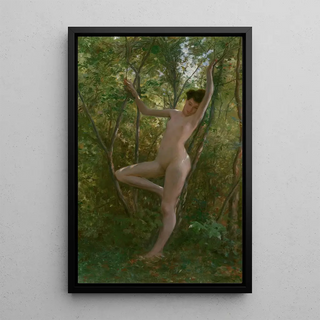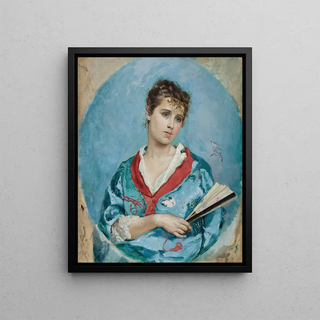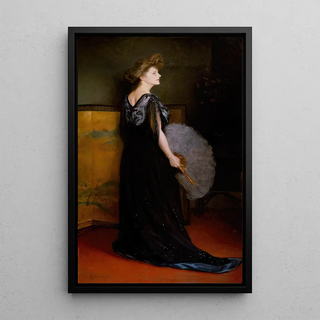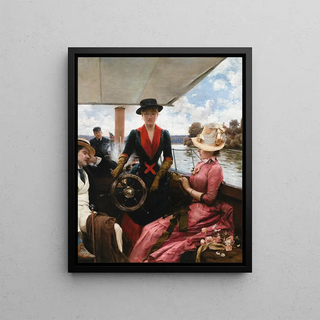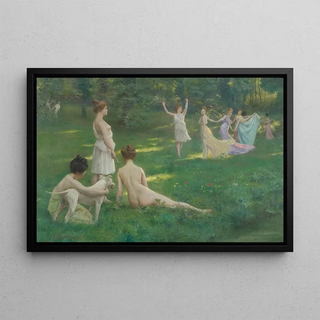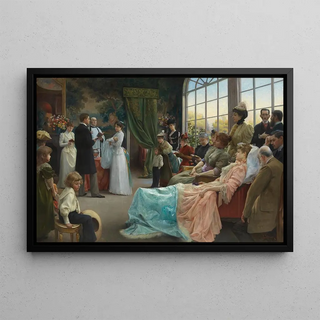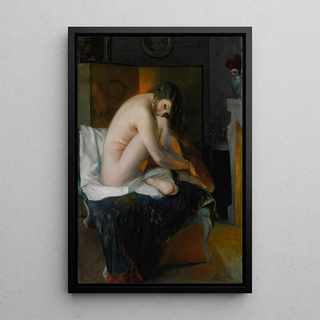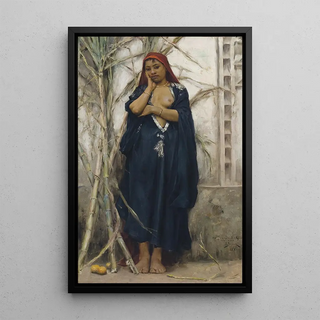Buy an art print by Julius LeBlanc Stewart: Parisian refinement and the splendor of the 19th century in your decor
Bring to your interior the elegance, light, and sophistication of Belle Époque Paris with art prints by Julius LeBlanc Stewart, painter of luxury, celebration, and worldly charm.
Our art prints in museum-quality on canvas or art paper reproduce the richness of fabrics, the finesse of faces, and the splendor of décors that characterize his work.
Each artwork transports you into a universe of elegance and softness, where refinement blends with the joy of living.
Choosing an art print of Julius LeBlanc Stewart means inviting into your home the charm of the 19th century, feminine beauty, and the light of Paris, in a chic and timeless style.
Julius LeBlanc Stewart: the painter of Parisian luxury and modernity
Born in 1855 in Philadelphia, Julius LeBlanc Stewart grew up in a wealthy American family that settled in Paris in 1865.
Very early, he shows exceptional talent for drawing and composition.
Trained in the workshop of Jean-Léon Gérôme and influenced by Alfred Stevens and Carolus-Duran, he quickly establishes himself as one of the most admired foreign painters on the Paris scene.
Known as the “American Parisian,” Stewart becomes the social chronicler of high society during the Belle Époque.
He paints balls, cruises, aristocratic salons, and elegant walks in the Bois de Boulogne, capturing with brilliance the grace, fashion, and light of fin-de-siècle Paris.
His works, exhibited at the Salon de Paris and collected by European aristocracy, reveal a remarkable technical mastery and a keen sense of staging.
A cosmopolitan artist, he blends in his painting French academic rigor with American sensitivity, translating the refinement of an era while foreshadowing the elegance of modernism.
He died in Paris in 1919, leaving behind a sumptuous body of work, a symbol of a vanished way of life.
A sumptuous, luminous, and narrative style
Julius LeBlanc Stewart's style is recognizable by his golden light, photographic precision, and theatrical staging.
His paintings, often large-scale, feature elegant figures in sumptuous settings, bathed in a muted and romantic atmosphere.
His compositions are both worldly and intimate: beneath the apparent beauty, he captures emotion, complicity, and fragility of his characters.
You can feel the influence of Manet and James Tissot, but with a more sensual and cinematic touch.
His palette, dominated by ivory, gold, and pastel tones, evokes discreet luxury, interior lighting, and festive evenings.
Stewart is also an exceptional portraitist, attentive to fabrics, reflections, and gestures, giving each model a lively presence.
His art embodies the beauty of an era and the sweetness of life, between realism and elegance.
Refined art prints for chic and luminous decor
The art prints of Julius LeBlanc Stewart enhance your interior with a classic elegance and refined warmth.
They perfectly match Haussmannian, modern, or romantic decor, adding a note of art and distinction.
In a living room, a large Stewart art print draws the eye and creates an atmosphere of prestige.
In a bedroom, its female portraits exude subtle serenity and sensuality.
In an office or a hall, its reception or music scenes add a touch of sophistication.
Our art prints in museum quality faithfully reproduce the gradations of light, the richness of materials, and the softness of skin tones.
Hanging a Stewart art print is like inviting the charm, grace, and modernity of 19th-century Paris into your home.
FAQ – About Julius LeBlanc Stewart
Where was Julius LeBlanc Stewart born?
In Philadelphia, United States, in 1855.
Where did he live and work?
Primarily in Paris, where he spent most of his life.
What is his artistic style?
Elegant realism blending academic art, impressionist light, and storytelling.
What are his favorite themes?
Parisian society, elegant women, balls, cruises, and refined genre scenes.
Who influenced him?
Jean-Léon Gérôme, Alfred Stevens, Carolus-Duran, and James Tissot.
What is his color palette?
Light tones, gold, ivory, pastel blue, and pinkish hues.
Where can his works be seen?
At the Musée d’Orsay, at the Metropolitan Museum of Art, and in several private collections across Europe and the United States.
Top 5 art prints by Julius LeBlanc Stewart
-
The Baptism (1892) – Intimate and refined scene illustrating family grace and the golden light of the hearth.
-
The Yacht Race (1889) – Dynamic and luminous composition, emblematic of high society.
-
Five O’Clock Tea (1884) – Elegant snapshot of Parisian life, blending fashion, luxury, and conversation.
-
Yachting Party (1890) – Joyful scene on a boat deck, a symbol of cosmopolitan refinement.
-
The Reception (1887) – Sumptuous painting of an aristocratic ball, teeming with details and emotions.
Why buy an art print of Julius LeBlanc Stewart?
Choosing a art print of Julius LeBlanc Stewart is inviting elegance and light of a fashionable and poetic art into your home.
His works, blending realism and romanticism, bring a refined, luminous, and harmonious atmosphere to any interior.
Our museum-quality art prints guarantee exceptional fidelity to the original colors, textures, and nuances, for a vibrant and durable display.
In a modern interior, they create a touch of luxury and softness.
In a classic setting, they evoke the refinement and beauty of a golden era.
Each art print becomes a tribute to the beauty, fashion, and light of the 19th century.
Conclusion: the splendor and grace of Belle Époque Paris.
The art prints of Julius LeBlanc Stewart available on artemlegrand.com embody the refinement, light, and discreet sensuality of the Parisian world of the 19th century.
They celebrate an art of luxury and delicacy, where every detail — a dress, a smile, a light — becomes poetry.
Thanks to the exceptional quality of our art prints, each nuance regains its original brilliance.
With Stewart, decoration becomes an art of living: elegant, harmonious, and profoundly human.



